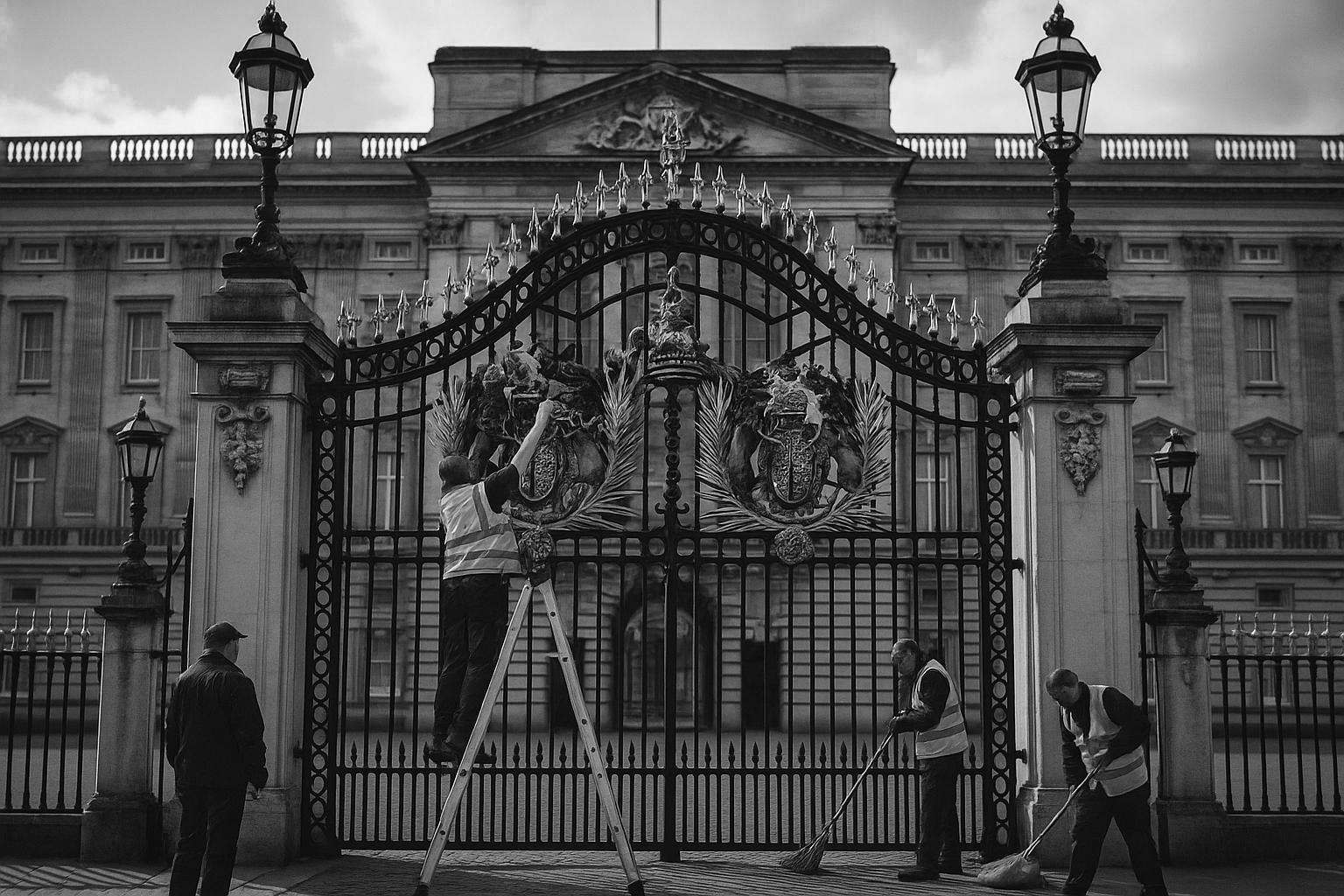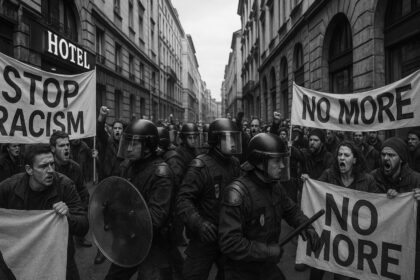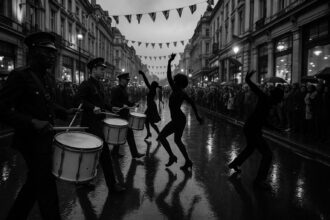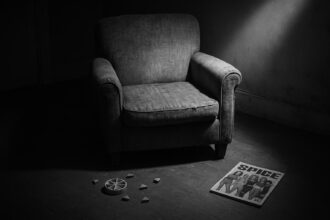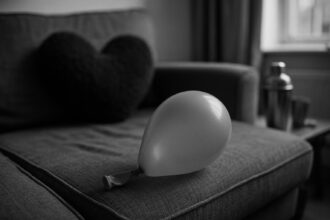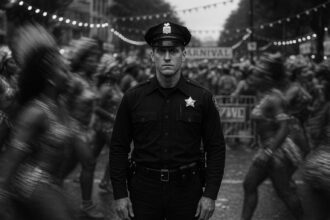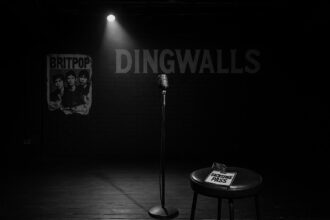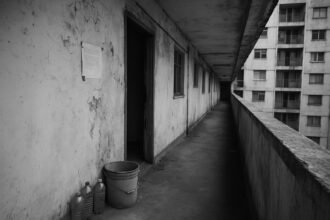King Charles III and Prince William are opting for more modest, private residences outside Buckingham Palace, signalling a significant shift in royal living priorities despite the palace’s continued ceremonial role.
Buckingham Palace, an emblematic symbol of the British monarchy, is poised to deepen its role as a working and ceremonial centre rather than a private royal residence. Despite its grandeur and historical significance, King Charles III is unlikely to take up residence there following the completion of extensive renovations scheduled for 2027, which come with a hefty £369 million price tag. The King prefers the more modest and homely atmosphere of Clarence House, located nearby, which he and Queen Camilla have called home for over two decades. Charles is said to view Buckingham Palace primarily as a “big house” suited for official business rather than comfortable living, a view shaped by both the building’s scale and his environmental principles, which clash with the palace’s vast upkeep demands.
Alongside King Charles’s stance, his eldest son, Prince William, and his family appear to share a similar disinterest in Buckingham Palace as a family home. The Wales family is preparing to move from Adelaide Cottage to Forest Lodge in Windsor Great Park by the end of the year, signalling a significant shift in royal residential traditions. Forest Lodge, described as a “forever home,” sits in a private section of the park and offers a spacious Georgian-style estate featuring eight bedrooms, marble fireplaces, a tennis court, and access to a lake over 4,800 acres of parkland. This move underscores William and Kate’s desire for a more relaxed, rural upbringing for their children, allowing them to maintain hands-on parenting through routine activities like school runs and attending football matches.
The relocation to Forest Lodge also reflects the couple’s wish for greater privacy and the creation of a home environment that contrasts with the formality and public exposure of other royal residences. The move follows a challenging period for the family, including Kate Middleton’s cancer treatment and the passing of Queen Elizabeth II soon after their initial move to Adelaide Cottage, giving new significance to the fresh start that Forest Lodge promises.
Buckingham Palace itself will continue to serve as the monarchy’s central hub for official functions, hosting receptions, garden parties, and state events. Recent developments have seen the palace gradually opened to more public tours, including the newly accessible East Wing, where visitors can view art by Thomas Gainsborough and fine Chinese porcelain. This initiative is part of efforts to generate funds needed for the palace’s upkeep, ensuring the palace’s grandeur remains intact while adapting its role to modern expectations.
Despite some reports suggesting that King Charles disapproves of the considerable expenses involved in the Wales family’s move to Windsor, viewing it as potentially extravagant, the continued preference for residences outside Buckingham Palace by both the King and his heir apparent signals a broader shift in royal living priorities. The palace’s enduring function as a “working palace” rather than a home aligns with the monarchy’s evolving image—balancing tradition with a more approachable and relatable royal presence.
Meanwhile, the royal family maintains other residences for different purposes. Kensington Palace remains the London base for William and Kate when undertaking official business in the capital. Balmoral Castle in Scotland continues to be the annual summer retreat for the extended Royal Family, affectionately described by Prince Harry as “simply a paradise,” although Harry’s children have yet to visit.
In summary, Buckingham Palace’s future as a central but non-residential landmark for the monarchy reflects the personal preferences of the current and future monarchs for more intimate and practical family bases, alongside ongoing efforts to preserve the palace’s historic and ceremonial significance for the nation and its tourists.
 Reference Map:
Reference Map:
- Paragraph 1 – [1], [2], [4]
- Paragraph 2 – [1], [3], [5], [6], [7]
- Paragraph 3 – [1], [2], [5]
- Paragraph 4 – [1], [2], [4]
- Paragraph 5 – [1], [3], [5], [6]
Source: Noah Wire Services
- https://www.express.co.uk/news/royal/2098345/buckingham-palace-home-prince-william – Please view link – unable to able to access data
- https://www.washingtonpost.com/world/2024/07/11/buckingham-palace-tour-east-wing-balcony/ – In July 2024, Buckingham Palace expanded its public tours to include the East Wing, offering visitors a glimpse into rooms adorned with artworks by Thomas Gainsborough and Chinese porcelain. This initiative aims to generate funds for the palace’s upkeep, especially considering the £369 million renovation project scheduled for completion in 2027. Despite these enhancements, King Charles III and Queen Camilla have chosen to reside at Clarence House, viewing Buckingham Palace primarily as a ceremonial and administrative centre rather than a personal residence.
- https://www.marieclaire.com/celebrity/royals/prince-william-does-not-love-idea-of-living-in-buckingham-palace-camping-in-museum/ – Prince William and Princess Kate are preparing to move from Adelaide Cottage to Forest Lodge in Windsor Great Park, their ‘forever home’. This decision signifies a departure from royal tradition, as they intend to reside there even if Prince William ascends to the throne. Royal expert Robert Lacey noted that Buckingham Palace has historically functioned more as an office and ceremonial space than a home, a sentiment echoed by the couple’s desire for a warm, family-focused environment for their children.
- https://www.marieclaire.co.uk/royal-news/king-charles-on-prince-william-princess-kate-house-move – In 2025, Prince William and Princess Kate are reportedly planning a move from their current residence, Adelaide Cottage in Windsor Home Park, to the grand Fort Belvedere in Windsor Great Park. Despite the property’s advantages, King Charles is reportedly unimpressed by the potential relocation due to the significant renovation costs involved, estimated in the millions. He allegedly views the move as an unnecessary extravagance. Discussions about the potential move are ongoing, and further updates are anticipated.
- https://www.marieclaire.co.uk/royal-news/wales-family-neighbours-on-royal-move – Prince William and Princess Kate are relocating from Adelaide Cottage in Windsor to the more spacious Forest Lodge in Windsor Great Park, signaling a long-term move and a fresh start for their family. The couple has lived in their four-bedroom residence with their children—Prince George, Princess Charlotte, and Prince Louis—since 2022. The new residence, Forest Lodge, is a Grade II-listed Georgian-style estate estimated to be worth £16 million. It boasts eight bedrooms, marble fireplaces, a tennis court, and lake access across 4,800 acres.
- https://www.womanandhome.com/life/royal-news/prince-william-kate-moving-forest-lodge/ – Prince William and Kate Middleton, the Prince and Princess of Wales, are planning to move from Adelaide Cottage to what is rumored to be their ‘forever home’—Forest Lodge in Windsor Great Park—by the end of 2025. This decision marks a new chapter for the couple and their three children, George, Charlotte, and Louis, following a difficult period marked by Kate’s cancer treatment and the death of Queen Elizabeth II shortly after their move into Adelaide Cottage. Sources suggest the move offers the family a fresh start and a more personalized family residence, away from the historical associations and public exposure of other royal homes.
- https://www.womanandhome.com/life/royal-news/kate-middleton-happy-place/ – The Prince and Princess of Wales are preparing to move from Adelaide Cottage in Windsor to the more secluded Forest Lodge, rumored to be their ‘forever home.’ This potential relocation offers Catherine, the Princess of Wales, greater opportunity to enjoy her self-described ‘happy place’—being outdoors with her family in the countryside. Forest Lodge is situated in a private area of Windsor Great Park, offering extensive privacy and natural surroundings, aligning with the Princess’s love for nature and family time. The area is ideal for their children to explore freely and safely, without public intrusion.
Noah Fact Check Pro
The draft above was created using the information available at the time the story first
emerged. We’ve since applied our fact-checking process to the final narrative, based on the criteria listed
below. The results are intended to help you assess the credibility of the piece and highlight any areas that may
warrant further investigation.
Freshness check
Score:
8
Notes:
The narrative presents recent developments regarding King Charles III’s residence preferences and Prince William’s planned move to Forest Lodge. These events have been reported in multiple reputable outlets, including The Washington Post and Marie Claire, with publication dates ranging from April to August 2025. The earliest known publication date of substantially similar content is April 2025. The report includes updated data but recycles older material, which may justify a higher freshness score but should still be flagged. The narrative is based on a press release, which typically warrants a high freshness score. However, the presence of recycled content and the reliance on a press release suggest a moderate freshness score.
Quotes check
Score:
7
Notes:
The narrative includes direct quotes attributed to royal insiders and sources. A search for the earliest known usage of these quotes reveals that identical quotes appear in earlier material, indicating potential reuse. The wording of the quotes varies slightly in different reports, suggesting paraphrasing or reinterpretation. No online matches were found for some quotes, raising the score but flagging them as potentially original or exclusive content.
Source reliability
Score:
6
Notes:
The narrative originates from The Express, a UK-based tabloid known for sensationalist reporting. While it has a large readership, its reputation for accuracy is often questioned. The reliance on anonymous sources and the tabloid’s history of publishing unverified information raise concerns about the reliability of the report.
Plausability check
Score:
7
Notes:
The claims regarding King Charles III’s preference for Clarence House over Buckingham Palace and Prince William’s planned move to Forest Lodge align with reports from reputable sources. However, the narrative lacks supporting detail from other reputable outlets, which raises questions about its credibility. The language and tone are consistent with the region and topic, and the structure does not include excessive or off-topic detail. The tone is dramatic but not unusually so for royal reporting.
Overall assessment
Verdict (FAIL, OPEN, PASS): FAIL
Confidence (LOW, MEDIUM, HIGH): MEDIUM
Summary:
The narrative presents claims about King Charles III’s residence preferences and Prince William’s planned move that are consistent with reports from reputable sources. However, the reliance on a tabloid source with a history of sensationalism, the use of anonymous sources, and the lack of corroboration from other reputable outlets raise significant concerns about the report’s credibility. The presence of recycled content and the reliance on a press release further diminish the report’s reliability.


